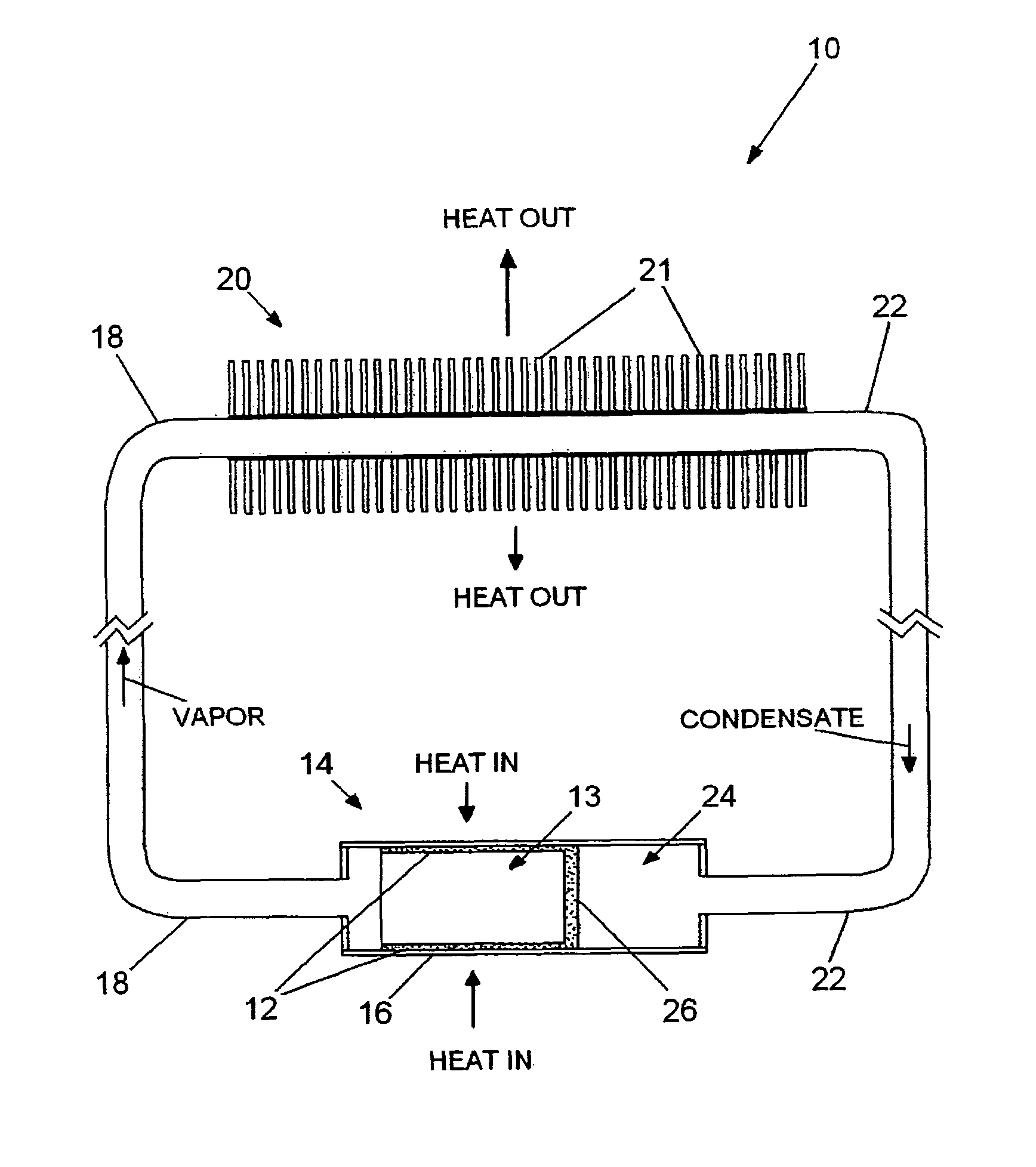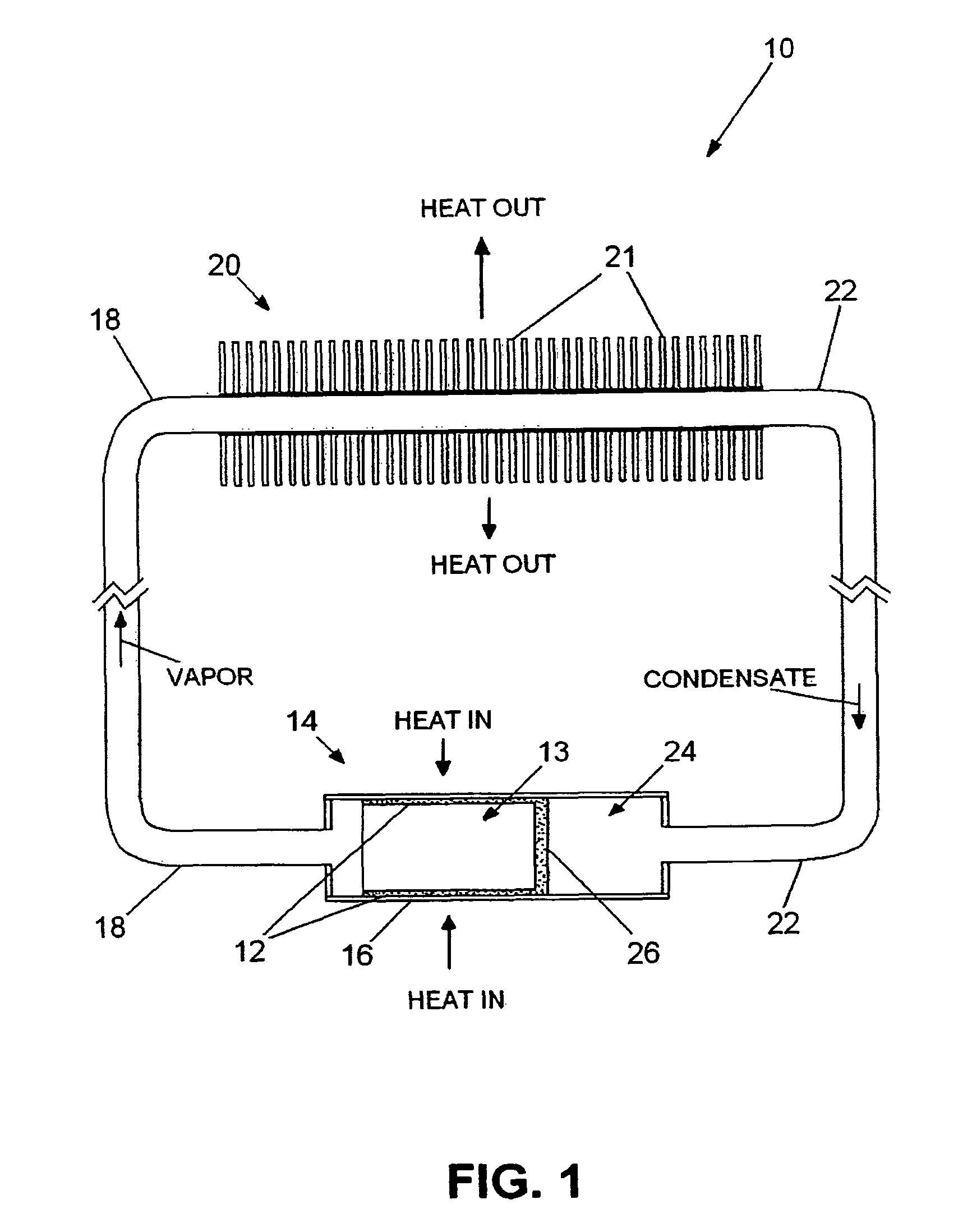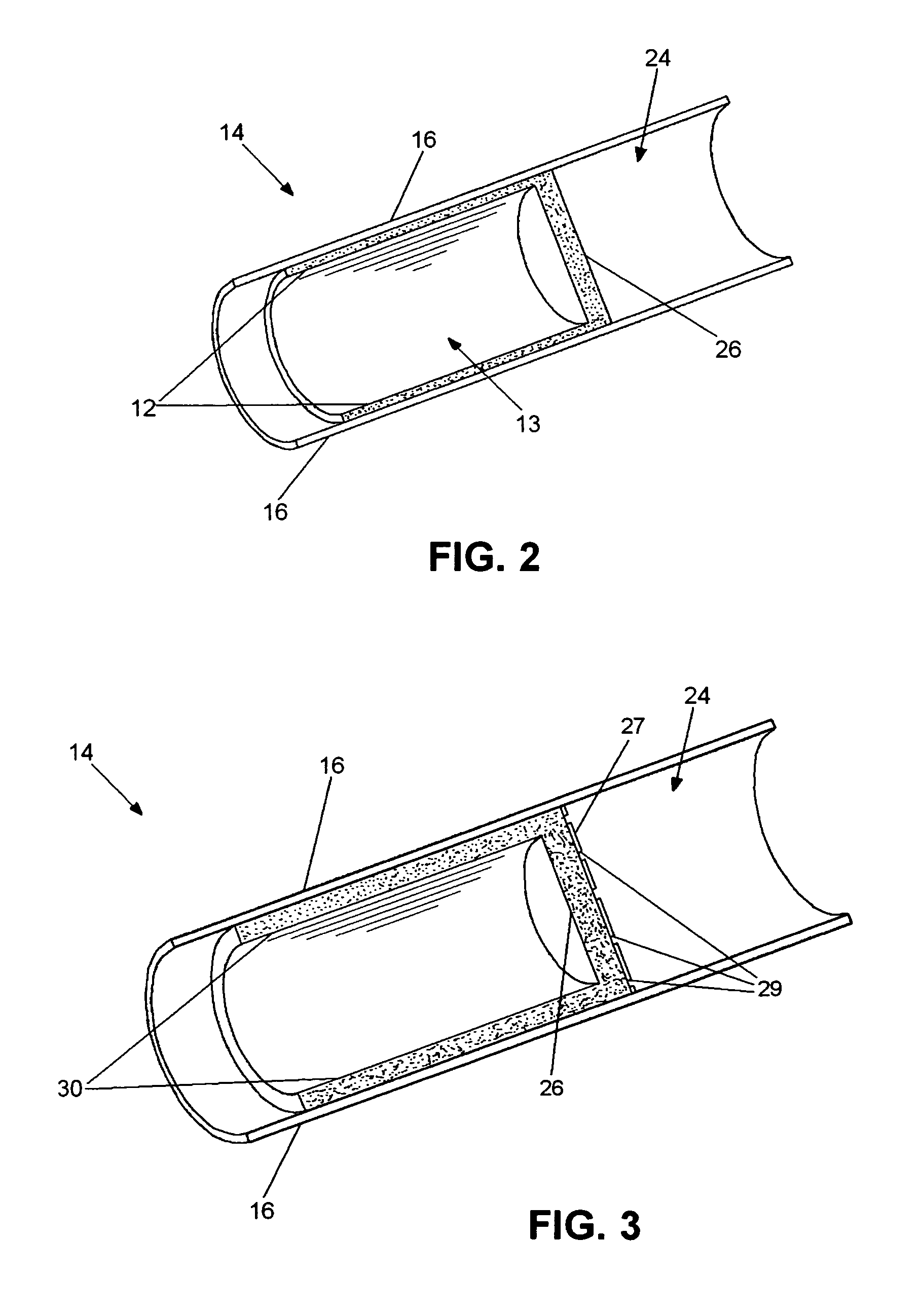Evaporator for capillary loop
a capillary loop and evaporator technology, applied in the field of heat transfer, can solve the problems of limited direct contact between the wick and the heated surface, the tendency of the vapor generated at the heat transfer surface to interfere with the heat transfer into and through the wick, and the pipe evaporator, etc., to achieve the effect of improving heat transfer, high permeability, and simplifying the construction of the evaporator
- Summary
- Abstract
- Description
- Claims
- Application Information
AI Technical Summary
Benefits of technology
Problems solved by technology
Method used
Image
Examples
Embodiment Construction
[0033]FIG. 1 is a schematic diagram of typical capillary loop 10 showing evaporator wick 12 of the preferred embodiment of the invention within evaporator 14. Evaporator wick 12 of FIG. 1 is a simple cup and is also shown in FIG. 2 in a perspective cut away view to better show the interior of evaporator 14. The important characteristic of evaporator wick 12 is that all the outer surfaces of its sidewalls are in intimate contact with heated walls 16 of the enclosure forming evaporator 14. This complete contact between evaporator wick 12 and heated enclosure walls 16 makes heat transfer and vaporization of the liquid within evaporator wick 12 much more effective, and the vapor generated moves through evaporator wick 12 into vapor space 13.
[0034]When capillary loop 10 is in operation, heat enters evaporator 14 and travels through evaporator enclosure wall 16 into wick 12 which is saturated with liquid. The heat causes the liquid to vaporize, and the vapor pressure moves the vapor out o...
PUM
 Login to View More
Login to View More Abstract
Description
Claims
Application Information
 Login to View More
Login to View More - R&D
- Intellectual Property
- Life Sciences
- Materials
- Tech Scout
- Unparalleled Data Quality
- Higher Quality Content
- 60% Fewer Hallucinations
Browse by: Latest US Patents, China's latest patents, Technical Efficacy Thesaurus, Application Domain, Technology Topic, Popular Technical Reports.
© 2025 PatSnap. All rights reserved.Legal|Privacy policy|Modern Slavery Act Transparency Statement|Sitemap|About US| Contact US: help@patsnap.com



